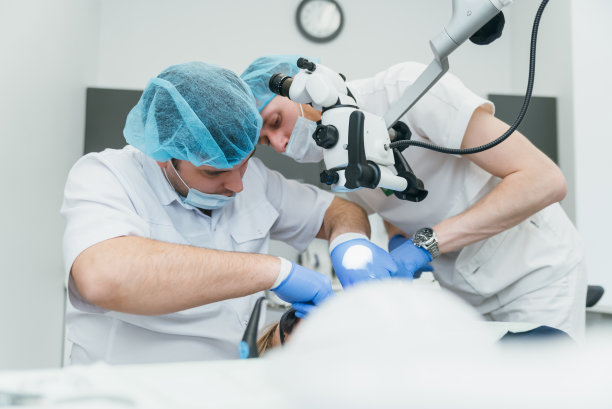Understanding the Process and Importance of Extracting a Tooth for Better Dental Health
Summary: Dental extractions, while often viewed with apprehension, play a crucial role in maintaining optimal dental health. This article discusses the process of tooth extraction, its indications, post-extraction care, and preventive measures to avoid future extractions. Understanding these aspects is essential for patients as it equips them with the knowledge to make informed decisions about their dental health. By exploring the rationale behind extractions, the pain management involved, and how to care for oneself afterward, individuals can better appreciate the importance of this sometimes necessary procedure. Enhancing one’s dental hygiene practices can ultimately lead to a healthier mouth and a more confident smile.
1. The Rationale Behind Tooth Extractions

Tooth extraction is necessary for various reasons, commonly including severe decay, periodontal disease, or overcrowding. When a tooth is damaged beyond repair, an extraction may be the best option to preserve oral health. Decayed teeth can lead to infections or abscesses, which might threaten not only the affected tooth but also adjacent teeth.
Additionally, overcrowding can cause misalignment of other teeth and negatively impact the aesthetic appearance of a smile. In some cases, especially before orthodontic procedures, removing certain teeth can create adequate space for proper alignment. Identifying the right conditions for extractions is crucial, as it helps prevent further dental complications.
Moreover, wisdom teeth, which typically emerge in late adolescence or early adulthood, are often extracted due to impaction or insufficient space in the mouth. These teeth can lead to pain and other oral health issues, making their removal a common practice among dental professionals.
2. The Tooth Extraction Procedure Explained
The extraction process usually involves a thorough examination and sometimes imaging to determine the tooths condition and position. Once the decision for extraction is made, the dentist will typically administer local anesthesia to numb the area. This is essential for minimizing pain during the procedure.
Extraction methods vary between simple and surgical extractions. A simple extraction involves loosening the tooth and removing it with forceps, while a surgical extraction may require incisions in the gums, particularly for impacted teeth. Understanding the approach your dentist chooses is vital for managing expectations concerning the experience.
Post-extraction, it is common to experience some swelling or bleeding. Dentists usually provide specific aftercare instructions, which are crucial for ensuring a smooth recovery and preventing complications, such as dry socket, a painful condition that can occur if the blood clot at the extraction site becomes dislodged.
3. Managing Post-Extraction Care and Recovery
Post-extraction care is critical for a successful recovery. Patients are advised to follow their dentists post-operative guidelines, which may include taking prescribed pain relief medication, applying ice packs to reduce swelling, and maintaining a soft-food diet for a few days. Careful attention to these instructions significantly impacts healing.
Good oral hygiene remains essential even after tooth extraction. Gently brushing and avoiding the extraction site initially can help reduce the risk of infection. Additionally, it’s important to refrain from sucking actions, like using straws or smoking, as they can disturb blood clots and lead to dry socket.
Monitoring the extraction site for any signs of infection, such as increased pain, swelling, or pus, is essential. If any abnormalities arise, patients should promptly contact their healthcare provider to address the issue. Adhering to these care guidelines can promote fast healing and minimize discomfort post-extraction.
4. Preventive Measures to Avoid Future Extractions
While extractions can be necessary, many dental problems leading to them are preventable. Regular dental check-ups play a vital role in detecting issues early on. During these visits, a dentist evaluates oral health and recommends necessary treatments, helping to ward off conditions that might require extractions.
Maintaining optimal oral hygiene is another preventive measure. Daily brushing, flossing, and using mouthwash, combined with a balanced diet low in sugars, help keep teeth and gums healthy. As a result, this reduces the risk of cavities, decay, and gum disease, which often lead to extractions.
Finally, staying informed about good dental practices and potential threats to oral health can empower patients. Education on signs of decay or gum disease heightens awareness and encourages individuals to seek care timely, ultimately preserving their natural teeth longer.
Summary: Understanding tooth extractions is crucial for anyone invested in their dental health. By comprehending the reasons for extractions, knowing what to expect during the procedure, and practicing diligent care afterward, patients can facilitate better recovery and prevent future extractions. Implementing preventive strategies will help maintain a healthy smile for years to come.
Education coupled with proactive measures is fundamental in achieving and sustaining optimal dental health. This comprehensive approach ensures that individuals understand their oral health better, making informed choices about their dental care.
This article is compiled by Vickong Dental and the content is for reference only



